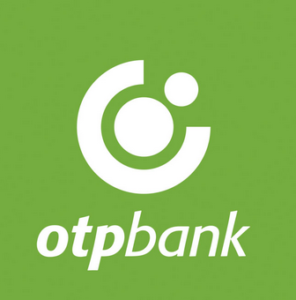
A new educational institution of the KAN Development educational network, Architectural and Engineering Collegium A+ (AIC+), opened in Kiev on Monday. The collegium is designed for 680 students, the company’s representatives said at the opening of AIC+. The area of the building is 13.1 thousand square meters, the total area of the training center is 3.30 hectares, of which 4 thousand sq. m. – shelter area. The training center is located on the territory of the residential neighborhood “Faina Town” in Kiev.
The company explained that the project is a conceptual educational complex that combines kindergarten, primary, secondary school, specialized lyceum and extracurricular activities in engineering, IT and architecture.
KAN added that $23 million was invested directly in the collegium, while the construction of each school shelter cost almost UAH 65 million.
As of today, KAN Development has invested over $100 million in educational institutions.
AIC+ became the 15th educational institution of the A+ network, where 3 thousand children study in full-day format and 700 teachers teach.
A+ activities began in 2005 at the initiative of Ivanna Nikonova. To date, the A+ educational network consists of three elementary school, two secondary schools, four kindergartens, three children’s clubs, a distance education center, a sports and music school and a wide range of extracurricular studios.

Nova Poshta LLC plans to increase its investments in the Moldovan market to $880 thousand in 2024, which is 4.5 times more than the volume of such investments in 2023, the company’s press service said on Wednesday.
“The bulk of the investments will be directed to expanding our network, repairing branches, automating workplaces, updating IT infrastructure, and increasing the fleet of vehicles for delivery by couriers,” said Sergey Shapran, CEO of Nova Poshta in Moldova.
In addition, in 2025, Nova Poshta plans to create a new sorting hub in Moldova, where business customers will be able to use fulfillment services.
According to the company, over the 10 years of its operation in this country, Nova Poshta has become one of the three fastest deliveries in Moldova, and has built a network of 21 branches, 261 post offices and three sorting terminals.
In addition, it was the first company in the Moldovan market to launch parcel delivery points on the basis of existing businesses: shops, gas stations, etc. Currently, there are 53 delivery points in Moldova, and the company plans to further expand its network.
According to the report, in the first half of 2024, Nova Poshta in Moldova delivered 1.1 million parcels, almost as many as in the whole of 2023 (1.2 million), and paid 12.5 million lei in taxes to the local state budget of the country.
“In Moldova, Nova Poshta delivers parcels from marketplaces in China, America, Ukraine, as well as to/from Romania.
The company is also working on integrating Moldova into the Nova Post Europe system, which will allow customers to send and receive parcels from 13 European countries.
In the first half of 2024, the company delivered 771 thousand international parcels, compared to 590 thousand for the whole of 2023.
As reported, in the first half of 2024, Nova Poshta increased its consolidated net income by 22.6% to UAH 24.45 billion, while the company’s consolidated net profit decreased by 36.9% to UAH 1.48 billion.

Since the beginning of 2024, the clients of JSC OTP BANK – individuals – have purchased domestic government bonds for a total amount of UAH 3.1 billion.
The number of transactions in the first half of the year amounted to 1897, which is 137% more than in the same period of 2023.
Investments in domestic government bonds in 2024 were made in two ways: customers purchased bonds directly at auctions of the Ministry of Finance through the OTP Bank UA app or from the Bank’s own portfolio, also using the app.
During the first and second quarters, securities totaling UAH 2.8 billion in equivalent were purchased at the Ministry of Finance auctions.
Total sales from the Bank’s portfolio by the end of the second quarter amounted to UAH 305 million in equivalent.
We remind you that the service for purchasing government bonds from its own portfolio in the OTP Bank UA application was launched two months ago, at the end of May 2024.
“Investing in domestic government bonds is not only an opportunity to support Ukraine’s financial stability in times of war, but also a good opportunity to diversify your savings and earn additional income in both hryvnia and foreign currency. Moreover, the repayment of funds is fully guaranteed by the state, so it is also a guarantee of the safety of savings. We offer our customers different ways to invest – they can buy government bonds directly from the auction or at any convenient time from the Bank’s portfolio, with the best rate, maturity, in the chosen currency, 24/7,” said Valeria Ovcharuk, product owner of OTP BANK.
In total, since the beginning of the full-scale invasion, OTP Bank’s individual clients have invested more than UAH 11.5 billion in government bonds in equivalent.
To learn more about investing in government bonds through the OTP Bank UA app, please follow the link.

Turkey’s Dalgakiran has invested UAH 400 million in launching a plant to produce industrial power equipment in Bilogorodka in Kiev region, Dalgakıran Kompresör Ukraine LLC said in a press release.
The construction project was started before the large-scale Russian aggression, and now thanks to the investment of the Turkish side it has been completed. The investment in the production site and office will create 50 new jobs.
“The office and new production in Ukraine will contribute to the development of enterprises in all sectors, giving them the opportunity to continue economic activities, save money and resources,” said Vyacheslav Dinkov, director of Dalgakiran Compressor Ukraine.
According to him, the company’s plans include further development and localization of production, development and supply of new equipment necessary for the restoration of energy and industrial production in Ukraine.
In turn, Chairman of the Board of Dalgakiran Kompresör Adnan Dalgakiran noted that the scaling of business in Ukraine is a contribution to support the country’s economy and energy sector in difficult times. “In conditions of power outages, our equipment is able to ensure the continuity of business processes and production, enable businesses to continue to operate, pay taxes and give Ukrainians jobs,” he said.
“Dalgakiran Compressor Ukraine” is a representative office of Turkish Dalgakiran, specializing in the manufacture and service of generator and compressor equipment, cooling systems and industrial pumps.
Ukrainian representative office sells equipment and improves it to meet the needs of the national customer. The basic equipment is manufactured in Turkey, where a full cycle of quality control is introduced, as well as its own design office.
The company has been working in Ukraine for 19 years, has representative offices in 11 cities and more than seventy own mobile service teams.
Dalgakıran Kompresör, industrial power equipment, INVESTMENTS, TURKEY

The Myasniy Rai chain of stores, known for its high-quality meat products, announces the sale of its assets and trademark. The offer opens up new opportunities for investors and entrepreneurs seeking to develop their business in the retail sector.
The Myasniy Rai chain was founded in 2017 and quickly gained the trust of customers due to its high quality products and focus on local suppliers. The first store was opened on Shevchenko Boulevard, after which the chain was constantly expanding, opening new outlets. During 2018-2022, 8 stores were opened. The total investment in business development and support amounted to more than $700,000. Now Myasnyi Rai includes three stores, a production shop, a coffee shop and an online store providing a wide range of products for customers.
Key assets:
Advantages and prospects
The Myasnyi Rai chain offers a unique opportunity for investors to enter the food market with a ready-made, well-established business.
Main advantages:
This offer for sale is an ideal option for entrepreneurs who want to invest in a stable and profitable business with broad development prospects. For more information, please call +380 67 230 00 17.
BUSINESS, BUY_BUSINESS, INVESTMENTS, MEAT, MEAT_PARADISE, TRADE

PJSC “Yuriya” (Cherkassy), producer of dairy products under TM “Voloshkove Pole”, has invested EUR1.6 mln in modernization of production facilities of its enterprises and put into operation a new line for production of glazed cheesecakes, said the general director of the enterprise Andrey Tabalov.
“This is one of the largest investments of the enterprise in 2024 in the amount of EUR 1.6 mln. Lithuanian automated line “PAKMA” will allow to produce additional 4 thousand cheesecakes hourly. It will increase the production capacity of glazed cheesecakes by 40%. This large-scale investment was planned within the framework of modernization of PJSC “Yuria” for 2024 and is a conscious decision in such a difficult time for the country, – he wrote in Facebook.
As reported, the producer of dairy products under TM “Voloshkove Pole” in 2023 invested EUR1.5 million in the installation of the line “Tetrapak” to double the production of ultra-pasteurized milk, which intends to sell on the domestic market and export.
The company posted a UAH 46.773 million net loss in 2023, compared with a net profit of UAH 85.34 million a year earlier. The company’s revenue decreased by 1.35% to UAH 1.6 billion, assets by 1.5 times to UAH 1.048 billion, and debt obligations by 24.7% to UAH 1.279 billion. At the same time the number of personnel increased by 14 people to 913 employees.
Yuriya PJSC is the successor of Cherkassy Municipal Dairy Plant with a design capacity of 25 tons of raw material processing per day.
The company has subsidiaries “Yuriya-2” – a network of branded stores and kiosks in Cherkassy and “Yuriya-trans” – a trucking company, which delivers raw materials and materials for processing, products to retail outlets, as well as provides other transportation services.
The raw material area of the company is Cherkassy, Kirovograd, Poltava, Kyiv and Vinnitsa regions. Milk is collected in more than 200 settlements.
The beneficiaries of the enterprise are Alexander and Andrey Tabalovs.